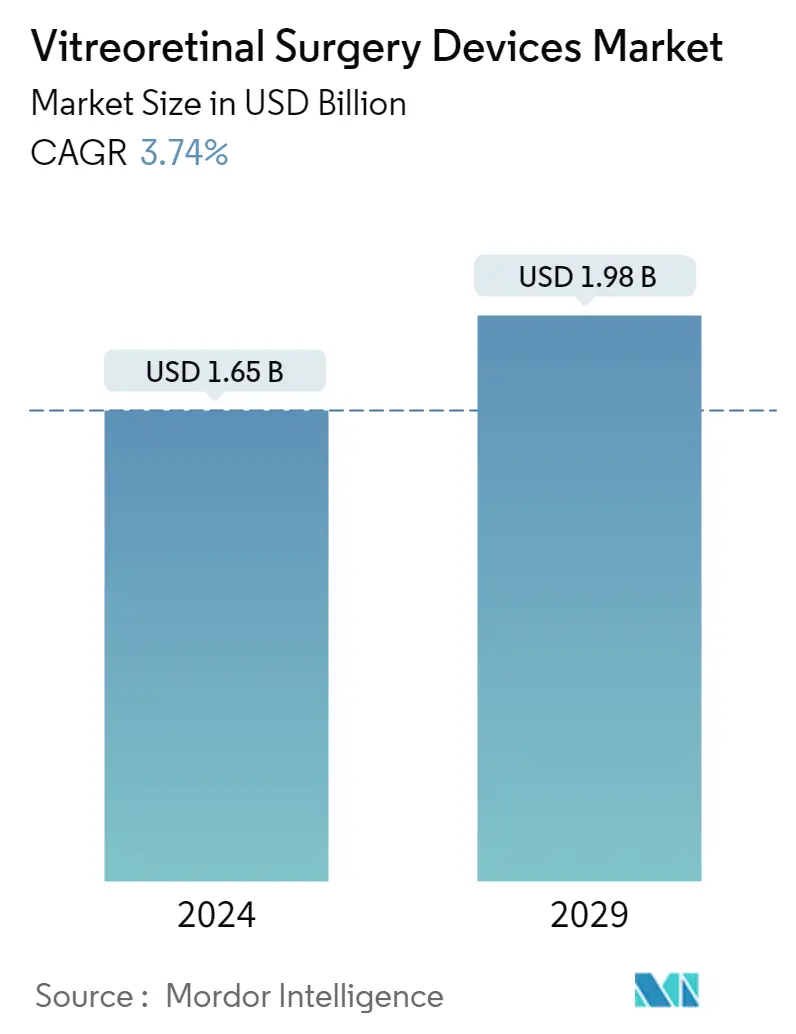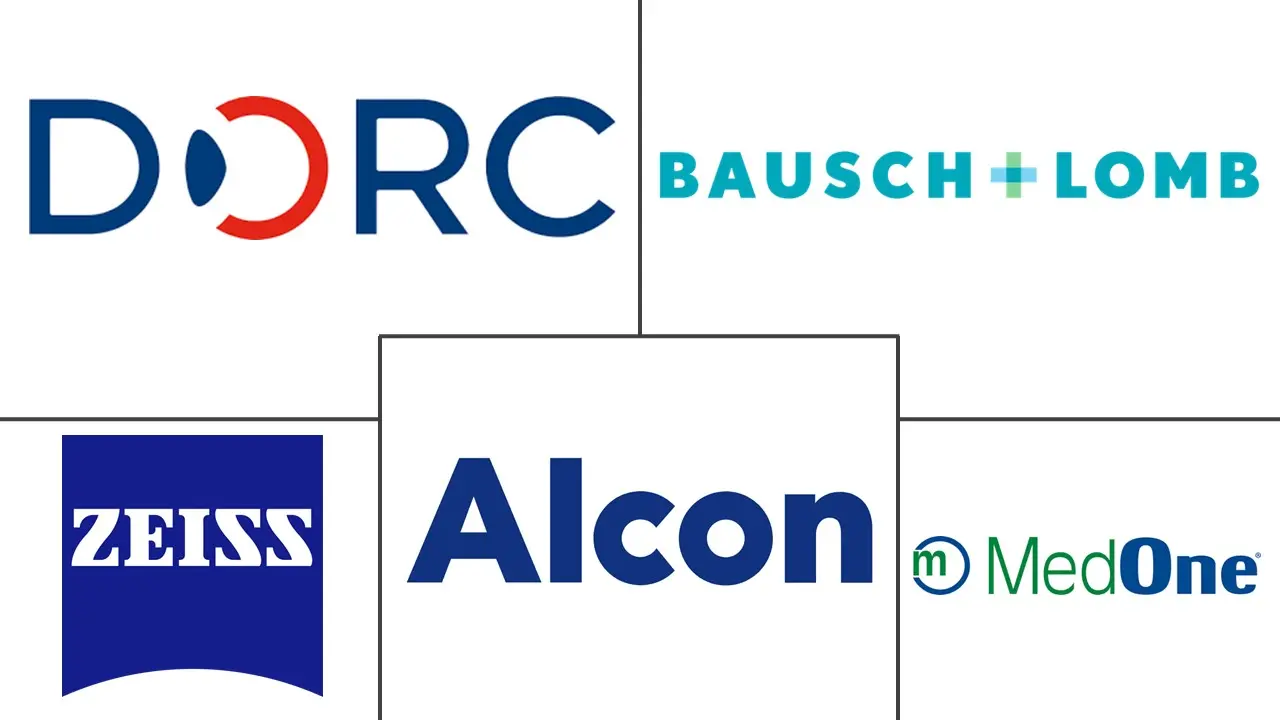Market Size of Vitreoretinal Surgery Devices Industry

| Study Period | 2019 - 2029 |
| Market Size (2024) | USD 1.65 Billion |
| Market Size (2029) | USD 1.98 Billion |
| CAGR (2024 - 2029) | 3.74 % |
| Fastest Growing Market | Asia Pacific |
| Largest Market | North America |
Major Players
*Disclaimer: Major Players sorted in no particular order |
Need a report that reflects how COVID-19 has impacted this market and its growth?
Vitreoretinal Surgery Devices Market Analysis
The Vitreoretinal Surgery Devices Market size is estimated at USD 1.65 billion in 2024, and is expected to reach USD 1.98 billion by 2029, growing at a CAGR of 3.74% during the forecast period (2024-2029).
The COVID-19 pandemic was an unprecedented health concern and adversely affected various surgical procedures. Due to regulatory authorities' strict guidance to prevent any non-emergent surgeries, the volume of surgeries drastically decreased throughout the pandemic. For instance, as per the research study published by PubMed Central in September 2021, the COVID-19 pandemic significantly impacted the clinical care for diabetic retinopathy during the early phase. Thus, COVID-19 had an impact on the studied market. However, with the decreasing number of COVID-19 cases and wide-scale vaccination programs, the studied market was expected to regain its pre-COVID-19 level potential over the coming years.
The increasing incidence of eye disorders such as diabetic retinopathy and macular holes and the increasing geriatric population is attributed to driving the growth of the studied market over the forecast period. For instance, according to the research study published in May 2021 by the National Library of Medicine, diabetic retinopathy remained a common complication of diabetes mellitus and a leading cause of preventable blindness in the adult working population. Among the people with diabetes mellitus, the prevalence of diabetic retinopathy was 22.27%, 6.17% for vision-threatening diabetes mellitus (VTDR), and 4.07% for clinically significant macular edema (CSME).
Many eye disorders are age-associated, like macular degeneration. With the growing global geriatric population, the burden of eye diseases is expected to increase, which is likely to augment the growth of the studied market. For instance, according to World Population Aging Highlights United Nations 2022 report, it was found that in 2022 there were 771 million people aged 65 years or over globally. The older population is projected to reach 994 million by 2030 and 1.6 billion by 2050. As older adults are often associated with eye disorders such as diabetic retinopathy and macular holes, the rising geriatric population is expected to enhance the adoption of vitreoretinal surgery devices to treat such diseases.
The companies are actively involved in new product launch developments and collaborations to expand their footprint. For instance, in January 2021, DORC received Health Canada approval of TissueBlue for Staining of the ILM During Vitreoretinal Surgery. TissueBlue is the first dye approved by Health Canada to aid in ophthalmic surgery by selectively staining the internal limiting membrane (ILM). Such development is expected to drive the market's growth over the forecast period.
Hence, owing to the factors such as the increasing incidence of eye disorders such as macular degeneration, diabetic retinopathy, and macular holes and the increasing geriatric population, the vitreoretinal surgery devices market is expected to grow over the forecast period. However, the side effects of the procedures are expected to restrain the market's growth during the forecast period.
